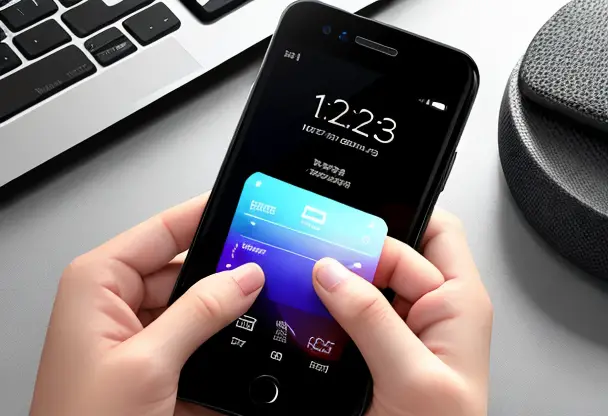In the fast-paced world of smartphones, overheating can be a common concern, impacting performance and user experience. Whether it’s after an intense gaming session or extended usage, a hot phone can be inconvenient and even detrimental to the device’s health. This article explores practical and effective methods to cool your phone quickly, ensuring optimal performance and user comfort.
Understanding the Causes of Phone Overheating
Intensive Usage and High-Performance Tasks
Performing resource-intensive tasks, such as gaming, video streaming, or running multiple apps simultaneously, can lead to increased CPU usage and generate heat.
Environmental Factors
External factors, including exposure to direct sunlight, high ambient temperatures, or using the device in enclosed spaces, contribute to overheating.
Insufficient Cooling Mechanisms
While smartphones are equipped with built-in cooling mechanisms like heat sinks, they may not always be sufficient during prolonged, demanding activities.
Quick Cooling Solutions
1. Close Unnecessary Apps
Closing background apps and processes immediately reduces the strain on the device’s resources, allowing it to cool down faster. This is especially important after running demanding applications.
2. Turn Off Unused Connectivity
Features like Bluetooth, Wi-Fi, and GPS contribute to heat generation. Turning off these connectivity options when not in use helps reduce the overall temperature.
3. Adjust Screen Brightness
Lowering the screen brightness reduces power consumption and heat generation. Consider using adaptive brightness settings or manually reducing brightness in high-temperature environments.
4. Remove Phone Case
Phone cases, especially those designed for protection, can trap heat. Removing the case enhances heat dissipation, allowing the device to cool more rapidly.
5. Place the Phone in a Cooler Environment
Transfer the phone to a cooler environment, away from direct sunlight or heat sources. Placing it in front of a fan or air conditioner accelerates the cooling process.
6. Avoid Charging During Cooling
Charging generates additional heat. If your phone is already hot, avoid charging until it cools down to prevent further temperature rise.
Cooling Methods During Intensive Tasks
7. Use Cooling Accessories
Cooling pads or cases with built-in fans actively dissipate heat during intensive activities. These accessories provide an extra layer of cooling.
8. Apply an Ice Pack (Caution Required)
Wrapping an ice pack in a thin cloth and placing it near the phone can provide rapid cooling. However, caution is necessary to prevent condensation or direct contact with the device.
9. Place the Phone on a Cool Surface
Putting the phone on a cool surface, such as a metal or ceramic plate, enhances heat transfer, aiding in quick cooling.
10. Optimize In-Game Settings
If overheating occurs during gaming, adjust in-game settings like graphics quality and frame rate to reduce the load on the device.
Preventive Measures for Long-Term Cooling
11. Keep Software Updated
Regularly updating the phone’s software ensures optimal performance, addressing potential bugs or inefficiencies that may contribute to overheating.
12. Monitor Background Processes
Apps running in the background can contribute to heat buildup. Use built-in tools or third-party apps to monitor and close unnecessary background processes.
13. Avoid Overcharging
Overcharging generates heat. Unplug the phone once it reaches full charge to prevent unnecessary heat accumulation.
14. Consider Performance-Enhancing Apps
Apps designed to optimize device performance can aid in efficient resource management, reducing heat generation during demanding tasks.
15. Check for Malware Regularly
Malware can impact device performance and contribute to overheating. Conduct regular malware scans to ensure a secure and efficient smartphone experience.
Pros and Cons of Rapid Cooling Methods
Pros
- Immediate Temperature Reduction: Quick cooling methods provide instant relief, allowing users to resume regular activities without prolonged interruptions.
- Simple and Accessible Solutions: Most rapid cooling methods involve simple actions or readily available items, making them accessible to users without the need for additional accessories.
- Effective During Intensive Tasks: Cooling accessories and external cooling methods are particularly effective during high-performance tasks, such as gaming or video streaming.
Cons
- Temporary Relief: Rapid cooling methods may provide only temporary relief. Long-term prevention involves addressing underlying causes and adopting preventive measures.
- Caution Required for Extreme Methods: Extreme methods like using ice packs require caution to avoid potential damage, condensation, or water exposure to the device.
- Limited Impact on Preventive Cooling: Rapid cooling methods may not address long-term preventive measures. Regular software updates, monitoring background processes, and optimizing usage are crucial for sustained cooling.
Conclusion
In conclusion, understanding the causes of phone overheating is essential for implementing effective and timely cooling solutions. Quick cooling methods provide immediate relief during overheating incidents, but adopting preventive measures ensures long-term device health.
Whether it’s adjusting settings, using cooling accessories, or employing rapid cooling techniques, users have various options to cool their phones quickly. Combining these methods with preventive measures establishes a comprehensive approach to maintaining optimal smartphone performance.
By incorporating these strategies into your smartphone usage routine, you can enjoy a cooler, more efficient device that meets your performance expectations, even during demanding tasks.
Also Read Latest Posts

